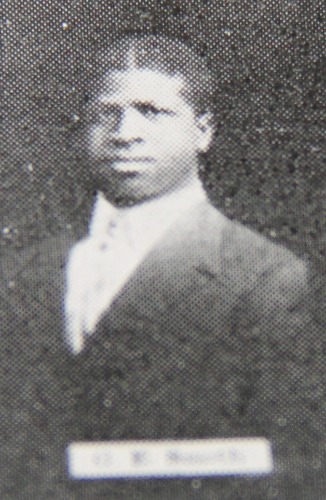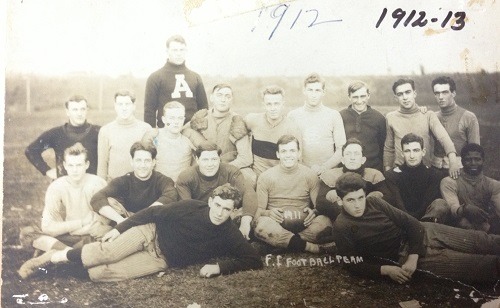Jim Crow Museum
1010 Campus Drive
Big Rapids, MI 49307
[email protected]
(231) 591-5873
Why is the Jim Crow Museum at Ferris State University?
We have heard that question many times. It is likely that many of the people who have asked that question are unaware of the social justice work of Woodbridge Nathan Ferris, our founder. He was a true visionary and ardent supporter of education for all people, including students of color.
From 1910 through 1928, a number of African American students attended Ferris Institute; many of them came from Hampton Normal and Agricultural Institute (known today as Hampton University). They came to Ferris to take college preparatory courses. Some remained to complete degrees; others left and completed their degrees at other northern universities. Among this collection of young African American students were men who later would serve as editors of national newspapers, argue cases before the United States Supreme Court and advise presidents and civil rights leaders. Those Hampton-Ferris students changed the lives of many and the direction of a nation. In the coming months we will share stories about some of these pioneering African Americans who attended the Ferris Institute.

Gideon Smith graduated from Hampton Institute in 1910. In that same year, he enrolled in Ferris Institute, where he played football, the first African American to do so, and was in the band. Smith is widely credited as being one of the first African American students at Ferris, if not the first.
After leaving the Ferris Institute in 1912, Smith continued his college football career at Michigan Agricultural College (MAC), which is today known as Michigan State University. This gives him the distinction of being the first African American student athlete at Michigan State (Warrior, 2008). Smith had a successful career at MAC and received a warm letter of congratulations in 1913 by Woodbridge N. Ferris, then the Governor of Michigan. The letter was published in a number of newspapers. Governor Ferris wrote:
“My Dear Mr. Smith:
I have been watching the reports of the M. A. C. football team. I am glad that you are receiving the same consideration at M.A.C. that you received at Ferris Institute. I am glad that merit counts.
I want to congratulate you upon the splendid work you have been doing in the football team. Your friends at the Ferris Institute read of your success with delight.
I like you for two reasons: First because you are a man and you have a wholesome ambition for doing your work well. Second, I like you because you are a success in football. Go ahead. I am sure that you are now realizing in a measure your ambition, and I am also sure that the future is rich with promise for you. I congratulate M.A.C. upon having a man of your ability on their team, a man who reflects credit upon himself and upon his fellow associates.
With best wishes, I remain, as ever.
Cordially yours
WOODBRIDGE N. FERRIS, Governor.
(New York Age, February 12, 1914)
The Detroit Tribune, also heaped praise upon the man they referred to as “the chocolate-hued member of the Michigan Aggies” claiming that he (despite his black skin) “vied with the best of them for popularity among the farmers.” His football skills certainly merited admiration. Smith starred on both sides of the football. On offense, he was a superior blocker; on defense, he was a rugged and powerful tackler. The Daily News of Chicago wrote in 1915:
“Smith, playing his last year for the Michigan Aggies, is another wonderful tackle. Coaches Harper of Notre Dame, Yost of Michigan and Stehm of Nebraska, all of whom have played against him, unite in declaring him of All-American class. Macklin, his own coach, has little to say about him, summing up his opinion in these words: ‘He is the greatest tackle I ever saw, East or West.’ The big colored man was largely responsible for the success of the Lansing team this year and was used offensively and defensively” (New York Age, December 23, 1915).
Smith was among the first African Americans to play professional football; he played in one game for the Canton Bulldogs in 1915, against the Massillon Tigers. He made a game-saving fumble recovery in that “state championship” game (Brown, 2016).

After his graduation from MAC in 1916, Smith was named Commander of Cadets and also served as a chemical science instructor at West Virginia Collegiate Institute, which is today known as West Virginia State University (The Institute Monthly, 1916). In 1919, Smith was the head football coach of the Virginia Normal and Industrial Institute, today known as Virginia State University (Virginia State Digital Archives).
In 1921, Smith returned to Hampton Institute to become the head football coach, a position he held until 1940, compiling a 102-44-12 record, including six one-loss seasons and two undefeated seasons in 1926 and 1931. His 1931 team outscored opponents 187 to 6 (College football data warehouse). He was inducted into the Hampton Athletics Hall of Fame in 2009 and the Michigan State Athletics Hall of Fame in 1992 (Hampton University Athletics). Smith was named the American Football Coaches Association’s recipient of the 2014 Trailblazer Award. That award was created to honor early coaches at historically black colleges and universities (Smith Honored 2014).
Smith truly was a trailblazer, the first African American to play football at two different institutions and one of the first to play professional football. He was not just a football player as he also held teaching positions at two institutions and had a stellar career as a coach. Smith proved to many what a man can do when given the opportunity to succeed. We at Ferris State are proud of what Gideon Smith accomplished and that our founder, Woodbridge Ferris, was one of the people who believed in Gideon and gave him an opportunity to succeed.
Franklin Hughes and David Pilgrim
Jim Crow Museum
2016
Hampton University Athletics, (n.d.). Gideon Smith
The New York Age, A Football Wizard. December 23, 1915, page 6
Virginia State University Digital Archives, 1919 Virginia Normal and Industrial Institute
football team.
http://contentdm.auctr.edu/cdm/singleitem/collection/VSUD/id/300/rec/3